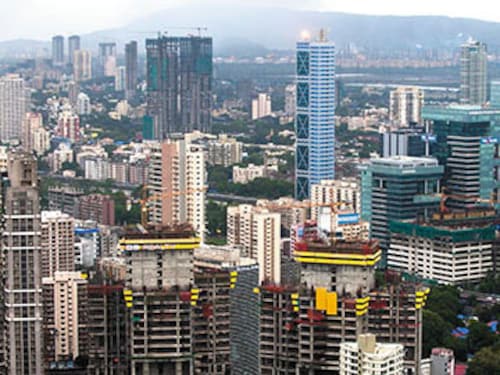Rajya Sabha passes GST Bill: How it will impact various sectors
Implementation of GST will affect various sectors differently. Grant Thornton offers a quick look at how some of them will fare once the new tax regime comes into effect


UPDATED: India moved a step closer to the implementation of the Goods and Services Tax (GST) regime, as its Parliament's Upper House, the Rajya Sabha, approved The Constitution (122nd Amendment) Bill, 2014 with 203 votes in favour and none against.
The GST, which is expected to be implemented from April 1, 2017, aims to replace multiple state and central levies with a single tax. Since the central and state taxes are likely to be subsumed under GST, it may result in fungibility of tax credits across intra- and inter-state transactions. Consequently, different industries may need to conduct a cost-benefit analysis in terms of applicable input and output taxes.
Real estate
Transfer of (completed) properties may continue to be outside the purview of GST and be liable only to applicable stamp duties.
In case this sector is brought within the ambit of GST, it is likely to result in transparency, which will significantly reduce tax evasion through more efficient transaction-tracking methods, and improved enforcement and compliance. Since GST may be levied on a single value, the current issue of levying tax on tax (VAT on central excise duty) is likely to be removed.
At present, developers pay various non-creditable taxes on supplies. GST may replace these multiple taxes with a single tax credit on supplies may also be available, thus reducing costs for all players.
However, if real estate output is exempted, then input GST credit could be a substantial cost for the sector, resulting in blockage of credit and higher costs to end consumers.
Financial services
In India, most of the banking and financial services are exposed to service tax, at the rate of 14.5 percent, while GST is expected to be 18 percent to 20 percent. Thus, services are likely to get costlier.
GST may make things cumbersome as financial service providers may be required to adhere to compliances across multiple states instead of the current single, centralised registration compliances.
Also, as GST is a destination-based tax, it might be a challenge to determine the destination of certain services (at present, services are taxed at the place of rendering the service). This may lead to a difficulty in determining state GST, central GST or inter-state GST on B2B and B2C transactions.
Interest on loans, trading in securities, foreign currency and retail services are also expected to fall within the ambit of GST. Recommendations by the banking industry suggest that such services and income should not come under GST. It is still to be seen whether these recommendations will be accepted.
Overall, it appears that imposing GST on banking and financial services may become a challenge and India, if successful, will chart a new course, which could well become a model for the rest of the world.
Travel, tourism and hospitality
India’s travel, tourism and hospitality industries have multiple taxes, levied by both the centre and the states. It is expected that under GST, supplies of hotels and restaurants will be subjected to a single tax.
At present, no credit is available on input services related to renovation or construction of hotels and resorts. This is expected to change under GST. R&D cess, payable on franchise fees and technical know-how, is likely to be subsumed under GST, thus simplifying compliance procedures and reducing multiple taxes.
However, it is unclear whether various benefits available under the existing Foreign Trade Policy will continue under GST. If such benefits are provided, input credit may not be available, resulting in higher costs.
On the whole, GST is likely to eliminate multiplicity of taxes and lack of credits. However, it may also lead to increase in tax rates.
Continued on next page...Health care
One of the major concerns of this industry is the current inverted duty structure that adversely affects domestic manufacturers, cost of inputs being higher than output. This discourages investment in this industry. GST may either remove the inverted duty structure or allow refund of accumulated credit. This would be a boon for this industry and can act as its growth catalyst.
The current cascading tax structure on import duty makes it expensive for the industry to import machinery. GST is likely to reduce this cost.
This sector enjoys several tax exemptions and benefits. It is still not clear whether these benefits will continue under GST. Health insurance and diagnostic centres, which are mainly service-oriented, may fall under higher tax rates, thereby making such services more expensive for consumers.
Alcoholic beverages
Alcohol for human consumption is proposed to be kept outside the GST regime, and will hence continue to attract state excise and VAT however, inputs are likely to fall under the ambit of GST.
Consequently, there may be blockage of input credit, leading to increased production cost and inefficiency in production and distribution.
Higher input costs and its cascading effect on taxes may push prices upwards, and may also hit exports.
Restaurants and bars serving alcohol, and selling both GST and non-GST products, may be required to undertake dual compliance (for GST and non-GST products).
Education
The education sector currently enjoys various tax exemptions and benefits services provided by schools and colleges are either not taxed or are covered in the negative list.
The situation is likely to continue even after the implementation of GST. In case it doesn’t, the sector may be able to avail of input credit or CENVAT credit on the duty paid on purchase of inputs and services. These are likely to bring down the final cost for the industry.
First Published: Aug 04, 2016, 06:25
Subscribe Now